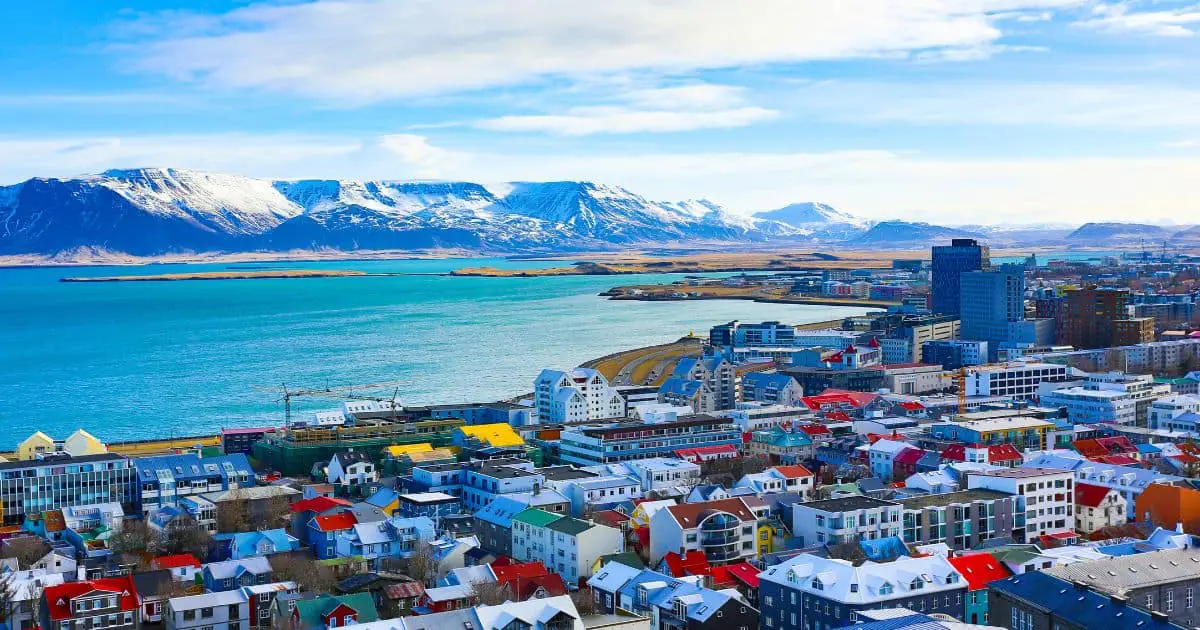Table of Contents
Are you planning a trip to Iceland but not sure when to go? Iceland is a stunning country with its unique landscapes, glaciers, hot springs, and waterfalls. However, the weather in Iceland can be unpredictable, and it’s essential to know the best time to visit to make the most of your trip.
In this article, we’ll take a closer look at the best time to visit Iceland for weather, outdoor activities, festivals and celebrations, Northern Lights and Midnight Sun, road trips, and budget travelers. We’ll provide you with all the necessary information to help you plan your trip to Iceland and make it an unforgettable experience. So, whether you’re a nature lover, an adventure seeker, or a budget traveler, keep reading to find out the best time to visit Iceland.
Key Takeaways
- The best time to visit Iceland for outdoor activities is during the summer months, from May to August.
- The best time to visit Iceland for Northern Lights and Midnight Sun is during the winter months, from September to March.
- Budget travelers can visit Iceland during the shoulder seasons, from April to May and September to October, to save money on flights and accommodations.
Best Time to Visit Iceland for Weather
If you’re planning a trip to Iceland, you’re probably wondering when the best time to visit is. While Iceland is a beautiful country to visit year-round, the weather can be unpredictable. In this section, we’ll break down the best times to visit Iceland for weather, including the summer, winter, and shoulder seasons.
Summer (June-August)
The summer months are the warmest and most popular time to visit Iceland. June, July, and August offer the longest days of the year, with up to 24 hours of daylight in some parts of the country. The temperature during this time averages around 50-59°F (10-15°C), making it perfect for outdoor activities like hiking, camping, and sightseeing.
While the summer months are the high season in Iceland, it is also the time when the country experiences the least amount of snow and rain. However, keep in mind that Iceland’s weather can be unpredictable, and it’s always a good idea to pack layers and prepare for wind and rain.
Winter (December-February)
If you’re looking to experience Iceland’s winter wonderland, then the winter months of December to February are the best time to visit. During this time, you can expect to see snow-covered landscapes, frozen waterfalls, and the Northern Lights.
However, Iceland’s winter months can be harsh, with temperatures averaging around 28-34°F (-2 to 1°C). The country experiences fewer daylight hours during this time, with some parts of the country only getting a few hours of daylight each day. If you’re planning a winter trip, make sure to pack warm clothing and prepare for icy roads.
Shoulder Seasons (May and September)
May and September are considered Iceland’s shoulder seasons, which means it’s the off-season. During these months, the country experiences fewer tourists, and the prices for accommodation and tours are generally lower than during the high season.
The weather during the shoulder seasons can be unpredictable, with temperatures ranging from 32-50°F (0-10°C). However, these months offer a unique experience, with spring flowers blooming in May and autumn foliage in September.
Overall, the best time to visit Iceland for weather depends on what you’re looking for. If you want to experience long days and mild temperatures, then the summer months are the best choice. If you’re looking to see the Northern Lights and snow-covered landscapes, then the winter months are the way to go. And if you’re looking for a more budget-friendly trip, then the shoulder seasons are a great option.
Best Time to Visit Iceland for Outdoor Activities
Iceland is a country that offers a plethora of outdoor activities throughout the year. Whether you are an adventure seeker or just want to explore the natural beauty of Iceland, there is something for everyone. In this section, we will explore the best time to visit Iceland for outdoor activities such as hiking, skiing, whale watching, a golden circle tour, and ice caves.
Hiking
Iceland offers some of the best hiking trails in the world. The best time to go hiking in Iceland is during the summer months from June to August when the weather is mild and the days are long. During this time, you can explore popular hiking trails such as the Laugavegur Trail, Fimmvörðuháls Trail, and Hornstrandir Nature Reserve.
Skiing
If you are a skiing enthusiast, then Iceland is the perfect destination for you. The skiing season in Iceland starts in late November and lasts until April. The best skiing resorts in Iceland are Bláfjöll and Hlíðarfjall. These resorts offer a range of slopes for all levels of skiers.
Whale Watching
Whale watching is one of the most popular outdoor activities in Iceland. The best time to go whale watching in Iceland is from May to September when the weather is mild and the sea is calm. During this time, you can spot various species of whales such as humpback whales, minke whales, and blue whales.
Golden Circle Tour
The Golden Circle Tour is a popular tourist attraction in Iceland. This tour covers the famous attractions such as the Geysir geothermal area, Gullfoss waterfall, and Þingvellir National Park. The best time to take the Golden Circle Tour is during the summer months from June to August when the weather is mild and the roads are clear.
Ice Caves
Ice Caves are a unique natural phenomenon that can be found in Iceland. The best time to visit the ice caves is from November to March when the temperature is below freezing and the ice caves are stable. During this time, you can explore famous ice caves such as Vatnajökull Glacier Ice Cave and Langjökull Glacier Ice Cave.
In conclusion, Iceland is a country that offers a range of outdoor activities throughout the year. The best time to visit Iceland for outdoor activities depends on the activity you want to do. Whether you are interested in hiking, skiing, whale watching, golden circle tour, or ice caves, Iceland has something for everyone.
Best Time to Visit Iceland for Festivals and Celebrations
Iceland is a country that loves to party, and there’s no better time to experience the country’s vibrant culture than during one of its many festivals. From music to food, there’s always something to celebrate in Iceland. Here are some of the best festivals and celebrations to check out during your visit.
Reykjavik Arts Festival
If you’re a lover of art and culture, then the Reykjavik Arts Festival is a must-see. This festival takes place every year in late May and early June and features a range of events, including music, dance, theater, and visual arts. The festival attracts artists from all over the world, making it a truly international event.
Iceland Airwaves
For music lovers, Iceland Airwaves is the ultimate festival. This event takes place every November and features a lineup of both local and international artists. The festival is known for its eclectic mix of genres, so there’s sure to be something for everyone.
Þorrablót
Þorrablót is an Icelandic mid-winter festival that celebrates the country’s culinary heritage. The festival takes place in January and February and features traditional Icelandic foods such as fermented shark, smoked lamb, and pickled ram’s testicles. This festival is not for the faint of heart, but it’s an excellent opportunity to try some of Iceland’s more unusual dishes.
Beer Day
Beer Day is a relatively new addition to Iceland’s festival calendar, but it’s quickly become one of the country’s most popular celebrations. This festival takes place on March 1st and marks the end of prohibition in Iceland. The festival is a great opportunity to try some of Iceland’s excellent craft beers and to party with the locals.
Viking Festival
For a truly unique experience, check out the Viking Festival in Hafnarfjörður. This festival takes place every June and celebrates Iceland’s Viking heritage. The festival features Viking battles, traditional crafts, and plenty of mead drinking. It’s a great opportunity to learn more about Iceland’s history and to experience something truly different.
Overall, Iceland is a country that loves to celebrate, and there’s no shortage of festivals and celebrations to check out during your visit. Just be prepared for crowds and high prices during peak festival season. But if you’re up for a party, then Iceland is the place to be.
Best Time to Visit Iceland for Northern Lights and Midnight Sun
If you’re planning a trip to Iceland, you’re probably wondering when is the best time to visit to see the Northern Lights or experience the Midnight Sun. Iceland’s unique location on the edge of the Arctic Circle means that it experiences long periods of darkness in the winter and almost 24 hours of daylight in the summer. This makes it the perfect destination for those seeking to witness the natural beauty of the Northern Lights or the Midnight Sun.
Midnight Sun (June-July)
If you’re looking to experience the Midnight Sun, the best time to visit Iceland is during the summer months of June and July. During this time, Iceland experiences almost 24 hours of daylight, which means you can explore the country’s stunning landscapes at any time of the day or night. The Midnight Sun is a natural phenomenon where the sun remains visible even at midnight, and it’s a sight that you won’t forget.
Northern Lights (September-April)
If you’re looking to witness the Northern Lights, the best time to visit Iceland is between September and April. During this time, Iceland experiences long periods of darkness, which provides the perfect conditions for viewing the Aurora Borealis. The Northern Lights are a natural phenomenon caused by the interaction of solar particles with the Earth’s magnetic field, and they are a sight to behold.
To increase your chances of seeing the Northern Lights, it’s recommended that you visit during the winter months and attend the Winter Lights Festival in Reykjavik. This festival celebrates the return of the light after the darkness of winter and features a range of events and activities, including light installations, concerts, and exhibitions.
During the winter months, Iceland experiences only a few hours of daylight, which means that you’ll have plenty of opportunities to see the Northern Lights. However, it’s important to note that the weather in Iceland can be unpredictable, so it’s best to be flexible with your travel plans.
In conclusion, Iceland is a destination that offers something for everyone, whether you’re looking to witness the natural beauty of the Northern Lights or experience the Midnight Sun. By visiting during the right time of year, you can ensure that you get the most out of your trip to this stunning country.
Best Time to Visit Iceland for a Road Trip
Are you planning a road trip to Iceland? If so, you’re in for a treat! Iceland is a breathtaking country with stunning landscapes, beautiful mountains, and scenic drives. However, before you hit the road, it’s important to know the best time to visit Iceland for a road trip.
Driving in Summer
Summer is the most popular time to visit Iceland for a road trip. The weather is warmer, the days are longer, and the roads are generally easier to navigate. With 24 hours of daylight in June, you’ll have plenty of time to explore all that Iceland has to offer.
However, keep in mind that summer is also the busiest time of the year in Iceland. The roads can be crowded, and popular tourist attractions can be packed with visitors. If you prefer a quieter road trip, you may want to consider visiting Iceland during the shoulder season.
Driving in Winter
Winter in Iceland can be a magical time for a road trip. The snow-covered landscapes and icy glaciers are truly stunning. However, driving in Iceland during the winter months can be challenging. The roads can be icy and slippery, and the weather can be unpredictable.
If you’re planning a road trip to Iceland in the winter, it’s important to be prepared. Make sure your vehicle is equipped for winter driving, and always check the weather and road conditions before you hit the road. It’s also a good idea to book your accommodations in advance, as many hotels and guesthouses close during the winter months.
Road Conditions
When planning your road trip to Iceland, it’s important to consider the road conditions. Many of the roads in Iceland are unpaved, and some of the mountain roads can be challenging to navigate. It’s important to have a 4×4 vehicle if you plan to venture off the main roads.
Daylight
The amount of daylight in Iceland varies depending on the time of year. In the summer months, there are 24 hours of daylight, while in the winter months, there can be as little as 4 hours of daylight. It’s important to plan your road trip accordingly and be prepared for the limited daylight during the winter months.
Crowded Roads
As mentioned earlier, the roads in Iceland can be crowded during the summer months. If you prefer a quieter road trip, consider visiting Iceland during the shoulder season. The spring and fall months are a great time to visit Iceland, as the crowds are smaller, and the weather is still relatively mild.
Wind
Iceland is known for its strong winds, especially during the winter months. When planning your road trip, be prepared for windy conditions and make sure your vehicle is equipped to handle the wind. It’s also a good idea to check the weather forecast before you hit the road, as high winds can make driving dangerous.
In conclusion, the best time to visit Iceland for a road trip depends on your preferences and what you want to see and do. Summer is the most popular time to visit, but the shoulder season and winter months can be just as beautiful and rewarding. Whatever time of year you choose to visit, be prepared for the road conditions and weather, and you’re sure to have an unforgettable road trip in Iceland.
Best Time to Visit Iceland for Budget Travelers
Are you dreaming of exploring the stunning landscapes of Iceland but worried about breaking the bank? Don’t worry, we’ve got you covered! Here’s a guide to help you plan your trip to Iceland on a budget.
Low Season
If you’re looking for the cheapest time to visit Iceland, then the low season is the perfect time for you. The low season in Iceland runs from November to March. During this time, you can find great deals on flights, accommodation, and tours. However, keep in mind that the weather can be harsh, and many attractions may be closed due to the weather conditions.
Shoulder Seasons
The shoulder seasons, which are from April to May and September to October, offer a great balance between mild weather and affordable prices. During these months, you can enjoy sightseeing without the peak season crowds and inflated costs. Keep an eye out for deals on flights and accommodation during this time.
High Season
The high season in Iceland is from June to August. The weather is mild, and the days are long, making it the perfect time for outdoor activities. However, this is also the busiest time of the year, and prices can be high. If you plan to visit during this time, make sure to book your accommodation and tours well in advance to avoid high prices and sold-out activities.
When it comes to budget travel in Iceland, it’s important to keep in mind that prices can vary greatly depending on the season and your travel style.
Here are a few tips to help you save money on your trip:
- Consider staying in hostels or guesthouses instead of hotels.
- Cook your meals instead of eating out at restaurants.
- Use public transportation or rent a car to explore the country.
- Look for free or cheap activities, such as hiking, visiting museums, or exploring local markets.
By following these tips and planning your trip during the low or shoulder seasons, you can experience the beauty of Iceland without breaking the bank.
Before You Go
Congratulations! You now have a good understanding of the best time to visit Iceland. Whether you’re from the United States, Europe, or anywhere else, you’ll find that Iceland is a magical destination that is worth a visit.
Remember that the best time to visit Iceland depends on what you want to do. If you’re interested in hiking, then the summer months of June to August are the best time to visit. However, if you want to see the Northern Lights, then the winter months of October to March are your best bet.
No matter what time of year you visit, Iceland is sure to leave a lasting impression. From the stunning landscapes to the friendly locals, you’re sure to have an unforgettable experience.
Before you go, make sure to pack for the weather. Iceland’s weather can be unpredictable, so it’s important to bring warm layers and waterproof gear.
Lastly, don’t forget to enjoy the local cuisine. Iceland has a unique food culture that includes everything from fresh seafood to traditional Icelandic lamb.
So what are you waiting for? Book your trip to Iceland today and experience all that this incredible country has to offer!
FAQs
When is the best time to see the Northern Lights in Iceland?
If you’re planning a trip to Iceland to see the Northern Lights, the best time to go is from late September to late March. During these months, the nights are the darkest, which makes it easier to see the Aurora Borealis. However, keep in mind that the weather can be unpredictable, and there’s no guarantee that you’ll see the Northern Lights on any given night.
What are the top places to visit in Iceland?
Iceland is full of amazing places to visit, but some of the top spots include the Golden Circle, Reykjavik, the Blue Lagoon, Jökulsárlón Glacier Lagoon, and Vatnajökull National Park. Each of these locations offers unique experiences and breathtaking scenery that you won’t want to miss.
What are some of the best things to do in Iceland?
There’s no shortage of things to do in Iceland, from hiking to hot springs to whale watching. Some of the best activities include visiting the geothermal pools, exploring glaciers, taking a boat tour to see puffins, and going on a Northern Lights tour.
What is the temperature like in Iceland throughout the year?
The temperature in Iceland varies throughout the year, but generally, it’s mild in the summer and cold in the winter. In the summer, temperatures can range from 50-60°F (10-15°C), while in the winter, they can drop to 20-30°F (-5 to -1°C). Keep in mind that Iceland can be windy, and the weather can change quickly, so it’s important to dress in layers.
What are the cheapest months to travel to Iceland?
The cheapest months to travel to Iceland are typically from November to March, which is the low season. During these months, you can find lower prices on flights, accommodations, and tours. However, keep in mind that the weather can be harsh during the winter, so be prepared for cold temperatures and snow.
What is the least crowded month to visit Iceland?
If you’re looking to avoid the crowds, the best time to visit Iceland is from November to March. During these months, there are fewer tourists, which means you can enjoy the sights without feeling overwhelmed. However, keep in mind that the weather can be harsh during the winter, so be prepared for cold temperatures and snow.
Now that you have a better idea of what to expect when planning a trip to Iceland, it’s time to start packing your bags. Whether you’re looking to see the Northern Lights, explore glaciers, or soak in geothermal pools, Iceland has something for everyone. So what are you waiting for? Book your trip today and get ready for the adventure of a lifetime!






Leave a Reply